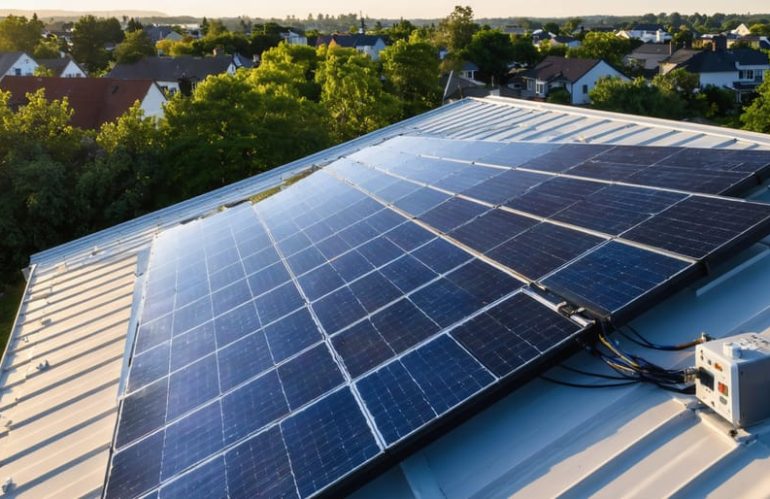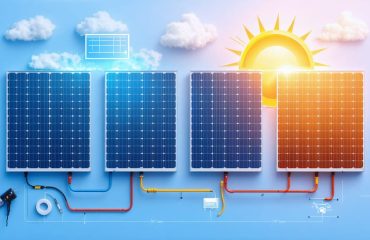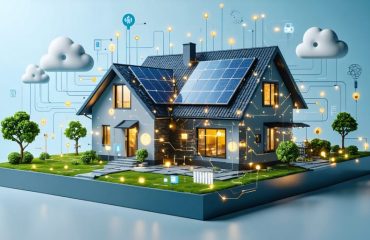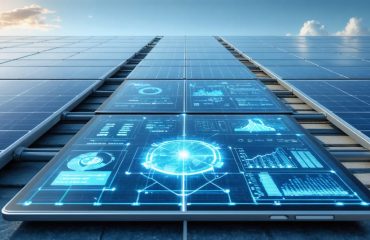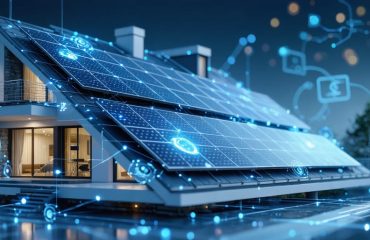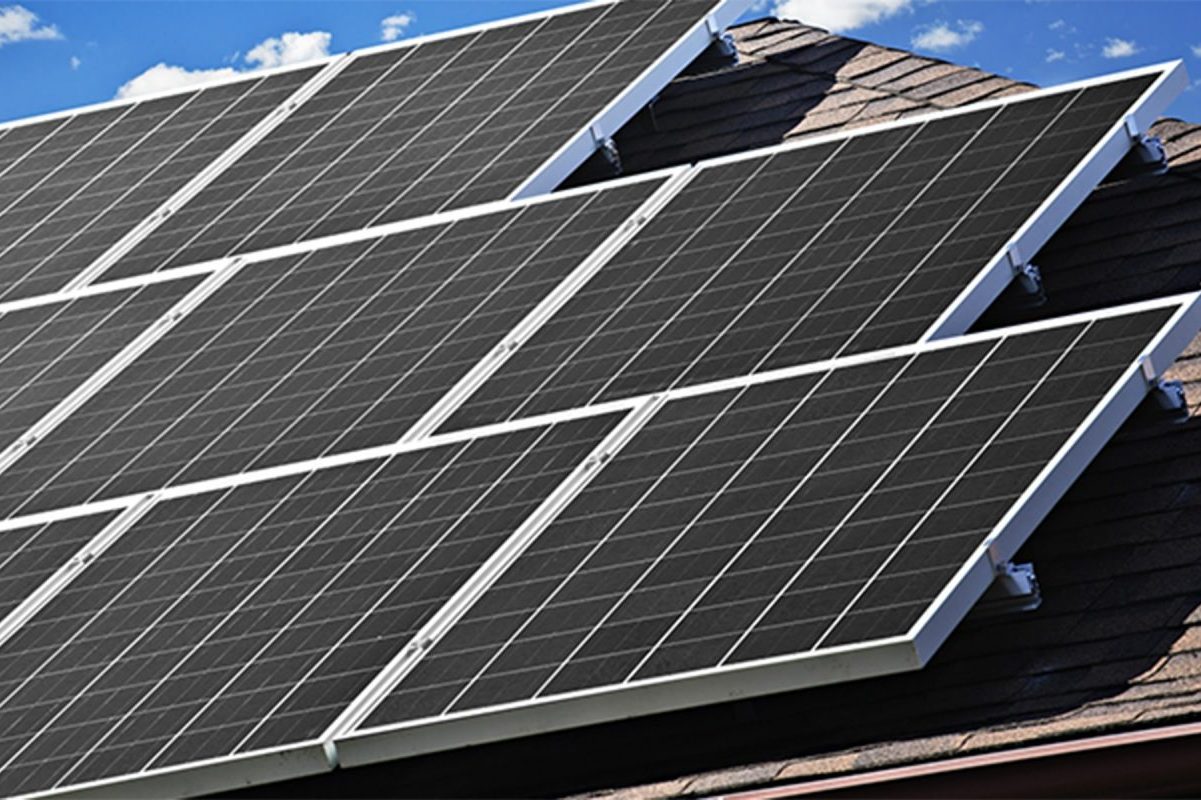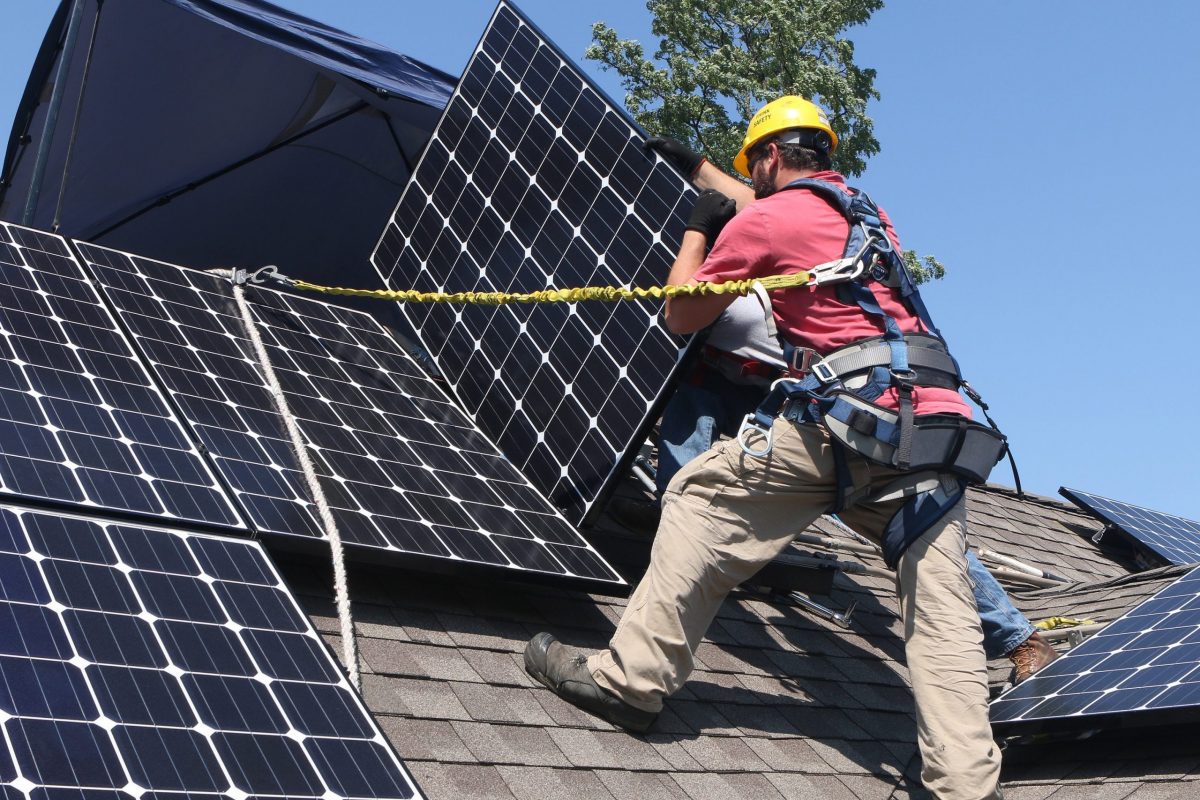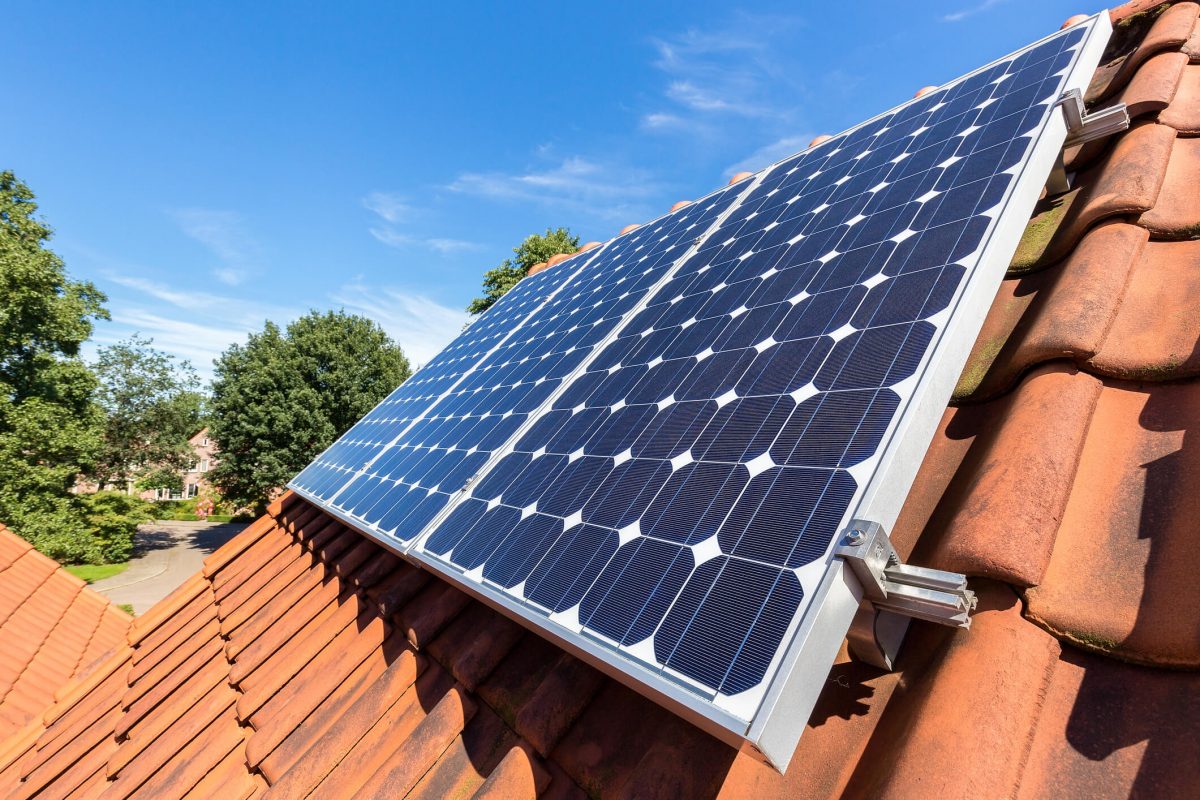Transform your solar investment into a smart energy solution with a solar monitoring system that puts control at your fingertips. Today’s remote monitoring technology lets you track energy production, detect performance issues, and optimize solar panel efficiency from your smartphone or tablet—all in real-time. Whether you’re at work or on vacation, these intelligent systems alert you to maintenance needs, measure cost savings, and provide detailed insights into your home’s energy patterns. By connecting your solar installation to the cloud, you’re not just generating clean energy; you’re maximizing your investment with data-driven decisions that can increase system efficiency by up to 20% and significantly reduce response time to potential issues.
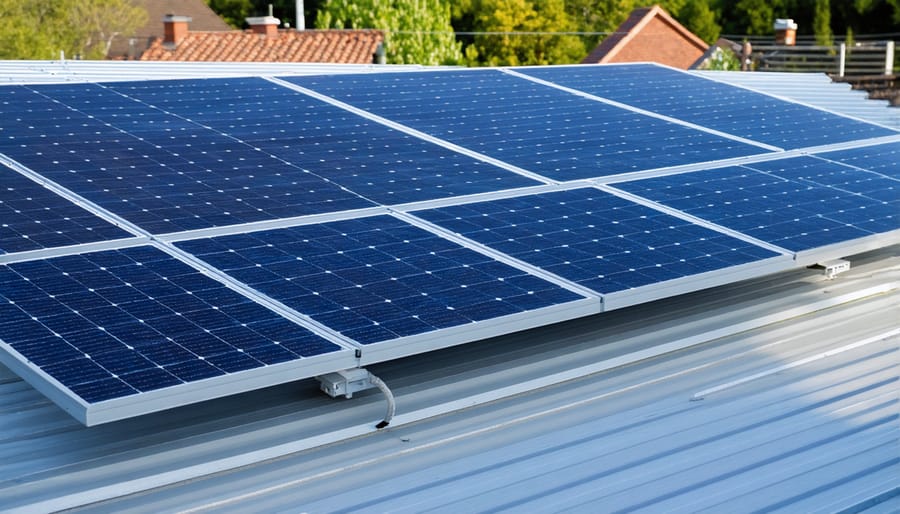
How Remote Solar Panel Monitoring Works
Key Components of Remote Monitoring
Remote monitoring of solar panels relies on three essential components working together seamlessly. First, smart sensors attached to your solar panels continuously track vital measurements like power output, voltage, and temperature. These sensors act like watchful guardians, ensuring your system performs at its best.
Next, data loggers serve as the system’s memory, collecting and storing all the information from your sensors. Think of them as a detailed diary of your solar panel’s performance, recording everything from energy production to weather conditions that might affect efficiency.
The communication system is the final piece that brings everything together. Using your home’s internet connection, it sends real-time data to your monitoring platform, which you can access through your smartphone or computer. This setup typically includes a gateway device that connects your solar equipment to the internet, enabling you to check on your system from anywhere.
Modern monitoring systems also feature backup capabilities and automatic alerts, so you’ll know immediately if something needs attention. This three-part system works around the clock to keep you informed about your solar investment’s performance.
Real-Time Data Collection
Solar panel remotes continuously collect vital data from your system, giving you a comprehensive view of your solar installation’s performance. The system monitors key metrics including power generation, energy consumption, panel efficiency, and even local weather conditions that might affect output.
This data is transmitted in real-time through your home’s internet connection or cellular networks, ensuring you stay informed even when away from home. Most modern systems update their readings every few minutes, providing nearly instantaneous feedback on your solar panels’ performance.
The collected information typically includes daily, weekly, and monthly energy production statistics, helping you track long-term trends. You’ll also receive alerts about potential issues, such as unexpected drops in performance or maintenance needs. Many systems even compare your production data with similar installations in your area, helping you gauge if your panels are performing optimally.
This continuous stream of information helps you make informed decisions about your energy usage and ensures you’re maximizing your solar investment’s potential.
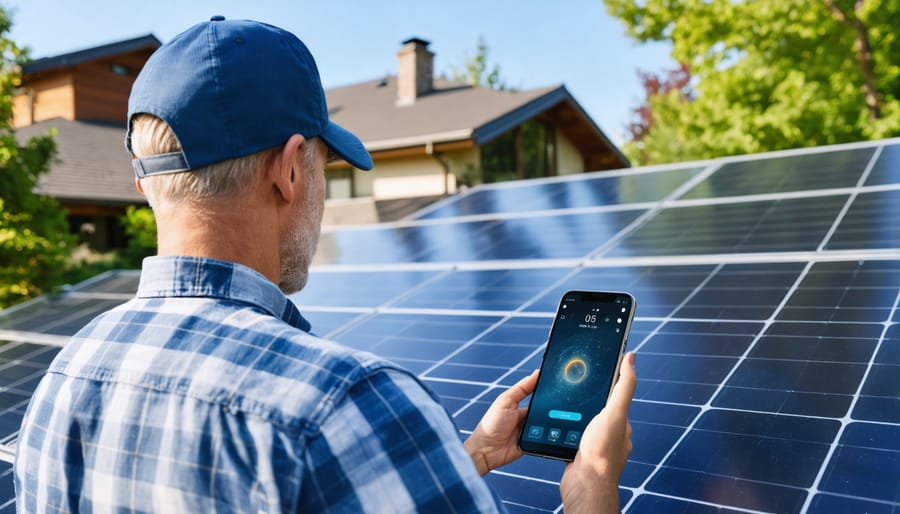
Benefits of Remote Solar Monitoring
Early Problem Detection
Remote monitoring serves as your solar system’s early warning system, catching potential issues before they develop into costly problems. Through sophisticated sensors and real-time system alerts, you’ll know immediately if your panels aren’t performing at their best.
Think of it as a health monitor for your solar investment. The system continuously tracks power output, comparing it against expected performance based on current weather conditions. When production drops below normal levels, you’ll receive instant notifications, allowing you to address issues promptly.
Common problems caught early include dust accumulation, shade interference, or electrical connection issues. Instead of discovering these problems months later through a surprisingly high electricity bill, remote monitoring helps you maintain optimal performance year-round.
This proactive approach typically saves homeowners hundreds or even thousands of dollars in potential repair costs and lost energy production. Plus, it provides peace of mind knowing your solar investment is constantly protected and performing at its peak efficiency.
Performance Optimization
Remote monitoring systems are powerful tools that help maximize your solar investment by providing real-time performance data and insights. These systems track your panels’ energy production throughout the day, identifying peak performance periods and potential inefficiencies. By analyzing this data, homeowners can make informed decisions about panel cleaning schedules, maintenance timing, and energy consumption patterns.
The monitoring system alerts you to any sudden drops in performance, which could indicate issues like shade interference or panel damage. This proactive approach helps prevent extended periods of reduced efficiency. You’ll also receive notifications about weather conditions that might affect production, allowing you to adjust your energy usage accordingly.
Many remote monitoring platforms include features that compare your system’s performance against similar installations in your area. This benchmark data helps ensure your panels are operating at optimal levels and meeting expected production targets. With these insights, you can fine-tune your system settings and maintenance schedule to achieve maximum energy generation year-round.
Energy Usage Tracking
Your solar panel remote lets you track energy usage in real-time, giving you valuable insights into your home’s power consumption patterns. Through an easy-to-use dashboard, you can monitor daily, weekly, and monthly energy production and usage trends. This data helps you identify peak consumption periods and adjust your habits accordingly.
The tracking feature shows exactly how much energy your panels generate and how much you’re saving on utility bills. You can see immediate results when you make energy-saving changes, like running major appliances during peak sunlight hours. Many homeowners report saving 20-30% more on energy costs simply by optimizing their usage based on this data.
You’ll also receive alerts about unusual consumption patterns, helping you spot potential issues before they impact your bill. This proactive approach to energy management ensures you’re getting the maximum return on your solar investment.
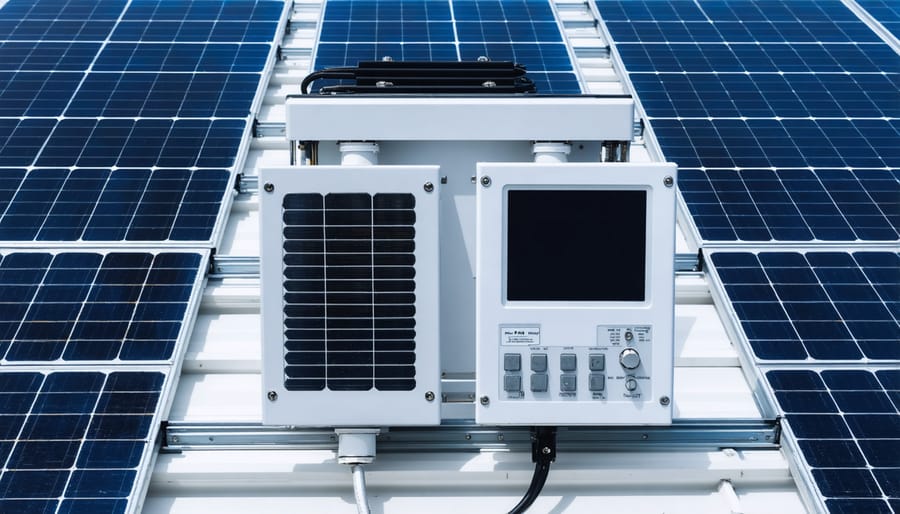
Setting Up Your Remote Monitoring System
Choosing the Right Monitoring Solution
When selecting a solar panel monitoring system, start by considering your specific needs and budget. Basic monitoring systems provide essential data like energy production and consumption, while advanced solutions offer detailed analytics and smart home integration.
Look for systems with user-friendly mobile apps or web interfaces that make tracking your solar performance intuitive. Ensure the monitoring solution is compatible with your solar inverter brand and can connect to your home’s internet network reliably.
Key features to consider include real-time monitoring capabilities, historical data storage, and automated alert systems that notify you of any performance issues. Some systems also offer weather forecasting integration to help predict your system’s output.
For maximum reliability, choose monitoring solutions from established manufacturers with good customer support and warranty coverage. Consider whether you want a system that only tracks solar performance or one that integrates with other home energy management tools.
Battery storage compatibility is another important factor if you’re planning to add energy storage in the future. Also, check if the monitoring system requires professional installation or if it’s suitable for DIY setup, as this can affect your overall costs.
Getting Started with Your Monitor
Setting up your solar panel remote monitoring system is straightforward and can be completed in just a few simple steps. Start by connecting the monitoring device to your home’s Wi-Fi network using the manufacturer’s mobile app. Once connected, attach the monitoring sensors to your solar inverter following the included installation guide – this typically involves connecting a few cables and securing the device in place.
After the physical installation, create your monitoring account through the app or manufacturer’s website. Enter your system details, including the number of panels and inverter specifications, to ensure accurate tracking. Most modern monitoring systems will automatically detect your setup once properly connected.
Launch the app and verify that it’s receiving data from your solar panels. You should see real-time energy production metrics within a few minutes. Take time to explore the various features, such as production graphs, energy consumption comparisons, and system health indicators.
Set up customizable alerts to notify you about important events, like unexpected drops in production or potential maintenance needs. Many systems also allow you to schedule regular performance reports, helping you stay informed about your solar investment’s effectiveness without constant checking.
Common Monitoring Alerts and What They Mean
Modern solar monitoring systems are designed to keep you informed about your system’s performance through various alerts. Here are the most common notifications you might receive and what they mean:
Production Alerts notify you when your system’s output falls below expected levels. This could indicate dirty panels, shade issues, or potential equipment problems. A quick visual inspection or professional cleaning usually resolves these alerts.
Connection Loss Alerts appear when your monitoring system temporarily loses communication with your solar setup. Often, this is due to Wi-Fi interruptions and typically resolves itself. If the alert persists, check your internet connection or restart your monitoring device.
Grid Outage Notifications inform you when your system disconnects from the power grid. This is a safety feature and normal during power outages. Your system will automatically reconnect once grid power is restored.
Battery Status Alerts (for systems with storage) keep you updated on charging levels and any unusual patterns. Low battery warnings help you manage energy usage during cloudy periods or nighttime.
System Error Messages indicate potential hardware issues. While some may resolve automatically, persistent error messages should be reported to your installer for professional assessment.
Temperature Warnings alert you to excessive heat that might affect system performance. These are more common in summer and usually resolve once temperatures normalize.
Remember, most alerts are informational and don’t require immediate action. However, keeping track of alert patterns helps maintain optimal system performance and ensures early detection of potential issues.
Remote monitoring has revolutionized the way homeowners manage their solar installations, making it easier than ever to maximize energy production and savings. By keeping a watchful eye on your system’s performance through user-friendly apps and online platforms, you can ensure optimal efficiency and quickly address any issues that arise. Taking the next step toward solar monitoring is simple: consult with your solar installer about compatible monitoring solutions, familiarize yourself with the available features, and start tracking your energy production. With these tools at your fingertips, you’ll be well-equipped to make informed decisions about your energy usage while contributing to a more sustainable future. Remember that a small investment in remote monitoring today can lead to significant energy savings and system longevity tomorrow, making it an essential component of any modern solar installation.

